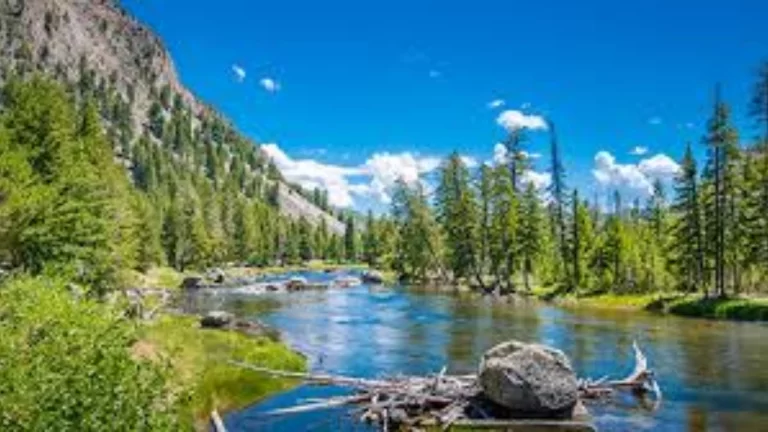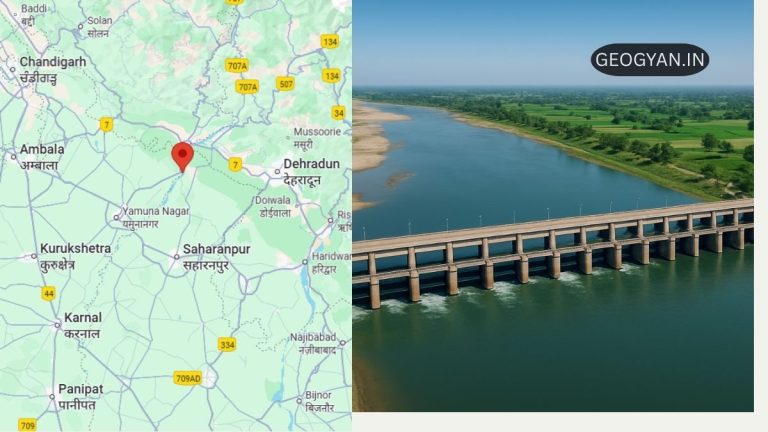Estimated reading time: 6 minutes
Table of contents

The Rocky Mountains extend from Canada to the United States in North America. These mountains feature terrains, peaks and many different valleys. Now, we will know more about the beauty, landscapes and importance of the Rocky Mountains.
Geological Formation of Rocky Mountains:
During the Paleozoic Era, The Rocky Mountain formation began millions of years ago and mountain-building processes helped shape our landscape today in the same period. The Rocky Mountain was generated by the Laramide Orogeny around 6 Lac Decades ago. The convergence of Pacific Plates and the North American resulted in the uplifting of the Earth’s crust, shaping the impressive mountain range we recognize today.
The Rockies consist of a complex system of mountain ranges and valleys, characterised by high peaks, deep canyons, and rugged terrain. Notable peaks include Longs Peak in Colorado, Mount Robson in Canada, and Gannett Peak in Wyoming, each contributing to the overall grandeur of the mountain range.
Different Parts and a Special Line of Rocky Mountains:
The Rocky Mountains explore the Northern, Central, and Southern Rockies and the special line at the top, the Continental Divide, which is like a mountain road that splits rivers in two directions.
Now, here’s something cool – There’s a special line at the very top of the Rockies called the Continental Divide. This make-believe line divides the land, helping rivers decide whether to flow east toward the Atlantic Ocean or west toward the Pacific Ocean. Think of it like a superhero mountain directing the flow of water!

The Landscape Features of the Rocky Mountains:
The Rocky Mountains are more than 4800 kilometers long. They’re one of the longest mountain ranges in the world. The Rocky Mountains are split into different parts, each with its special features. Here’s a brief overview of the different parts of the Rocky Mountains:
1. Northern Rockies:
- Found in Canada and the northern part of the US.
- Forests, mountains, and big wild spaces characterize it.
- There are several standard standout spots in the Northern Rockies including Glacier National Park and Jasper National Park.
2. Central Rockies:
- It covers Colorado, Wyoming, and parts of Montana and Idaho.
- Has tall mountains, like Colorado’s well-known Fourteeners.
- Rocky Mountain and Yellowstone both National Park are in Central Rockies.
3. Southern Rockies:
- Extends through New Mexico and southern Colorado down to northern Mexico.
- Has lots of different landscapes, including high plateaus and deep canyons.
- Important parts are the Sangre de Cristo Range and the pretty Rio Grande River.
4. Front Range:
- A big part of the Rocky Mountains is towards the east, reaching into Colorado.
- Denver, Colorado’s capital, is right by the eastern foothills of the Front Range.
- Famous for its beautiful foothills and being close to urban areas.
5. Continental Divide:
- Follows the highest part of the Rockies and directs where rivers go.
- If the water is on the west side, it heads to the Pacific Ocean; if on the east side, it goes to the Atlantic Ocean.
- Acts like a border that shapes the land on each side.
6. Canadian Rockies:
- Famous for stunning views, like turquoise lakes and tough mountain scenes.
- In Canada’s provinces of British Columbia and Alberta, The Northern Rockies extend.
- The Canadian Rockies are best known for their national parks Banff and Jasper.
7. Intermountain Region:
- Full of basins and plateaus, such as the Great Basin and Columbia Plateau.
- The area between the Rocky Mountains and the Pacific mountain ranges.
- Highlighted features include the Snake River Plain and the unique high desert landscapes.
Discovering the distinct regions of the Rocky Mountains gives us a deeper understanding of the diverse geography, ecosystems, and captivating natural wonders that make this mountain range a fascinating and varied area.
And guess what? The Continental Divide runs along the tip-top of the whole range!
The Economic Impact of the Rocky Mountains:
The Rocky Mountains are important for the surrounding regions. Several key factors contribute to their economic importance:
1. Tourism and Recreation:
Many tourists and visitors come across the world each year during the summer from June to August to the Rocky Mountains for adventures.
2. Natural Resources:
Minerals, water and wood are valuable natural resources found in the Rocky Mountains. People cut down trees, and mine for minerals to help make products using wood.
3. Water Resources:
The mountains are really important as a water source for nearby cities and farms. Rivers from the Rockies help with watering crops and supplying water to cities downstream.
4. Energy Production:
A lot of valuable energy resources in the Rocky Mountains, such as natural gas, and the possibility for supportable energy. Getting these fossil fuels and working on supportable energy projects are both big parts of why the energy sector matters economically.
5. Agriculture:
The plains and valleys offer rich soil for farming around the Rockies. People uplift grow crops, and do other farming activities there, which helps manufacture food for the local and nearby areas.
6. Real Estate and Development:
The beautiful scenery and outdoor activities in the Rocky Mountains attract real estate development in the surrounding regions. This involves residential properties, vacation homes, and commercial spaces, all of which help the local economy.
7. Transportation and Infrastructure:
Getting around in the Rockies can be tough, but it helps decide how infrastructure is built. Constructing and keeping up with roads, tunnels, and other transportation places are crucial for linking communities on both sides of the mountains.
All things considered, the Rockies have a broad economic significance that includes the provision of water, the generation of electricity, agriculture, tourism, the exploitation of natural resources, real estate, and the construction of infrastructure. The hills are essential to improving and maintaining the local economies.
Ecosystem Variety of Rocky Mountains:
The Rocky Mountains are famous for their diverse ecosystems. They range from grassy foothills, alpine meadows to subalpine forests. The mountains’ different altitudes and climates make special places that are home to many plants and animals of all kinds. The Rockies are habitat to several iconic wildlife including elk, bighorn sheep, grizzly bears and bald eagles.
At the highest elevations there is alpine tundra which is a fragile specialized ecosystem adapted to harsh conditions. Some unique plants such as the alpine forget-me-not and cushion plants have evolved to thrive under these difficult circumstances. People are working tirelessly towards preserving and safeguarding the Rockies so that they remain a safe habitat where numerous diverse plant life and animals can flourish.

Conclusion:
The Rocky Mountains, with their geological past, are marked by their geological history, diverse geography, and rich ecosystems. The attractiveness of these mountains is not only in the fact that they affect climate, they help to keep different ecosystems alive, and they also contribute a lot to the economy of the areas through which they pass. We are the caretakers of this God-given treasure who must adore it, shield it, and retain them for our children’s future. This would enable their magnificence to be maintained for posterity.






























One Response